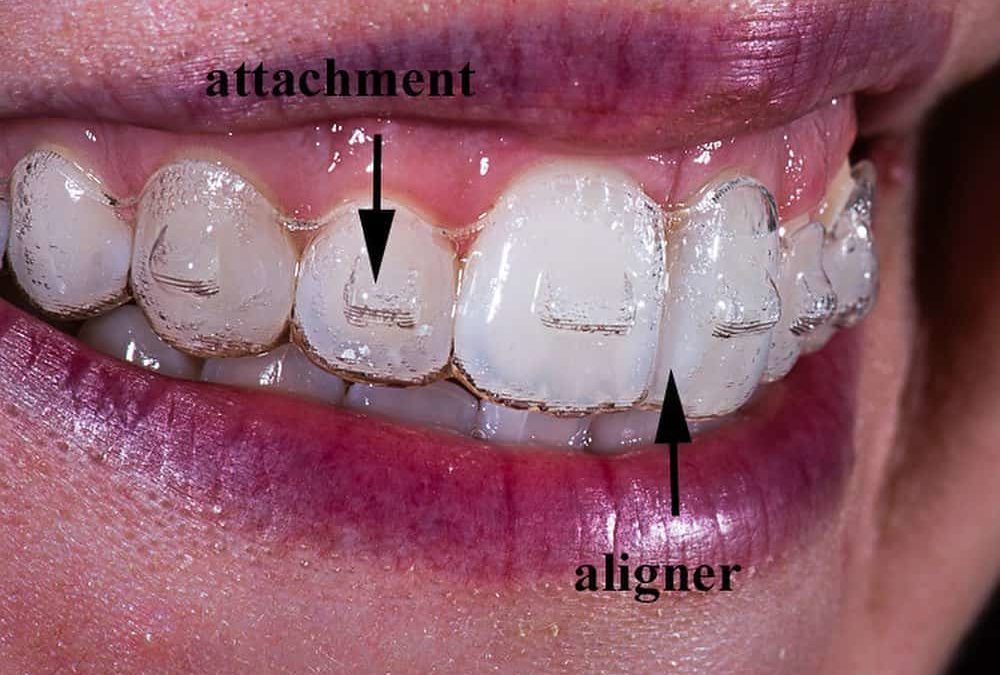Frequently Asked Questions Regarding Invisalign: Everything You Required to Know
Frequently Asked Questions Regarding Invisalign: Everything You Required to Know
Blog Article
Invisalign vs. Conventional Braces: Which Choice Is Right for You?
When considering orthodontic therapy, the option in between Invisalign and typical braces offers a number of important factors that merit cautious examination. Invisalign offers a very discreet choice with detachable aligners, while traditional braces offer a more visible yet efficient option for serious imbalance. Each alternative encompasses distinct benefits and downsides associated with visual appeals, convenience, treatment period, and price. Comprehending these subtleties is crucial for making a notified choice that aligns with your individual choices and lifestyle. The inquiry remains: which choice will finest satisfy your orthodontic demands and assumptions?
Introduction of Treatment Alternatives

On the other hand, standard dental braces include metal braces and wires that are bonded to the teeth. This method uses continual stress with time to achieve placement. While reliable for complex orthodontic problems, typical dental braces require normal brows through for modifications and can posture obstacles in preserving oral hygiene because of the trouble of cleansing about braces and wires.
Both options have their advantages, and the selection often depends upon certain oral problems, lifestyle preferences, and client conformity. Inevitably, consulting an orthodontic specialist is essential for establishing one of the most ideal treatment plan customized to specific demands. Recognizing the subtleties of each choice can dramatically affect the general success of orthodontic therapy.
Aesthetic Considerations
A significant variable affecting the selection in between Invisalign and conventional dental braces is the aesthetic appeal each treatment provides. Invisalign aligners are crafted from clear plastic, making them virtually unseen when used. This very discreet look is especially attracting teenagers and adults that might feel awkward concerning their orthodontic therapy. The capacity to maintain an all-natural smile throughout the placement process can substantially enhance the client's confidence in professional and social settings.
On the other hand, standard dental braces are composed of metal brackets and cords, which can be much more noticeable. While innovations in orthodontic technology have actually brought about the development of smaller brackets and colored elastics, typical braces still keep an even more noticeable account. For some people, the visibility of dental braces may discourage them from looking for needed therapy.
Ultimately, the choice between Invisalign and standard braces may pivot on personal preferences regarding aesthetics. Clients who prioritize discernment commonly lean toward Invisalign, while those who are much less worried about exposure might go with conventional braces. Understanding the visual implications of each option is essential for making an educated choice that lines up with one's lifestyle and choices.
Convenience and Convenience

In terms of convenience, Invisalign aligners are removable, enabling people to enjoy their preferred foods find out here without limitation and preserve ideal dental hygiene. Brushing and flossing are streamlined, as the aligners can be obtained during these regimens, whereas traditional dental braces require cautious navigating around braces and cables.
Furthermore, Invisalign's dynamic system permits less orthodontic brows through. Clients normally obtain numerous collections of aligners at the same time, which can streamline the treatment process and decrease time spent in the orthodontist's chair. In contrast, conventional braces necessitate normal adjustments, making them much less convenient for those with hectic timetables. Invisalign. Overall, the comfort and comfort of Invisalign make it an appealing option for several individuals seeking orthodontic therapy.
Therapy Duration and Performance
While both Invisalign and typical dental braces are efficient in remedying dental misalignments, the duration of treatment can differ substantially between both options. Typically, Invisalign therapy can take anywhere from 12 to 18 months, depending upon the intricacy of the situation. The clear aligners work by slowly moving teeth right into their wanted placements, and regular follow-ups with an orthodontist aid make sure progression remains on track.
On the other hand, typical dental braces commonly need a longer commitment, typically varying from 18 months to three years. This is due to their fixed nature and the use more helpful hints of brackets and wires, which can be much more efficient for severe imbalances and intricate cases (Invisalign). The therapy performance of traditional dental braces is well-documented, as they permit accurate changes and greater control over tooth activity
Ultimately, the option in between Invisalign and conventional dental braces might pivot on both the awaited treatment period and the details dental concerns available. Consulting with an orthodontist is critical, as they can offer customized referrals based upon specific needs, guaranteeing the chosen approach aligns with wanted durations and end results.
Price Comparison and Insurance Policy Choices
Price plays a considerable duty in the decision-making procedure for people taking into consideration orthodontic therapy, whether deciding for Invisalign or traditional braces. Usually, the expense of Invisalign arrays from $3,000 to $8,000, while typical dental braces usually cost in between $2,000 and $6,000. Aspects affecting these costs include the intricacy of the situation, the period of therapy, and geographical area.
Numerous dental insurance coverage plans offer partial insurance coverage for orthodontic therapies, but the specifics can vary extensively. Typically, typical dental braces may be a lot more often covered by insurance plans contrasted to Invisalign, which some insurance companies categorize as an aesthetic procedure.
In addition, a number of orthodontic methods provide flexible layaway plan, making both therapy choices a lot more obtainable. Patients ought to inquire about prospective financing alternatives and discount rates for in advance payments. Assessing the complete cost, including insurance coverage advantages and payment plans, is essential for making an informed choice that straightens with both aesthetic choices and budget considerations.

Conclusion
In recap, the option between Invisalign and traditional dental braces pivots on multiple aspects, including visual choices, comfort, treatment period, and price. Invisalign offers a discreet, removable choice that facilitates oral health and dietary flexibility, while standard braces may be preferable for complex dental problems and often come at a reduced price factor. Inevitably, assessment with an orthodontist is important to evaluate specific scenarios and establish the most ideal treatment option for attaining ideal dental alignment.
When considering orthodontic treatment, the selection in between Invisalign and standard dental braces presents numerous vital factors that warrant cautious analysis.Contrasting Invisalign and typical dental braces exposes unique therapy choices for orthodontic correction.While both Invisalign and conventional dental braces are efficient in dealing with dental imbalances, the duration of therapy can vary dramatically between the 2 choices.Expense plays a significant duty in the decision-making procedure for individuals thinking about check orthodontic therapy, whether opting for Invisalign or traditional braces.In recap, the choice between Invisalign and standard dental braces hinges on several variables, consisting of aesthetic preferences, comfort, treatment duration, and expense.
Report this page